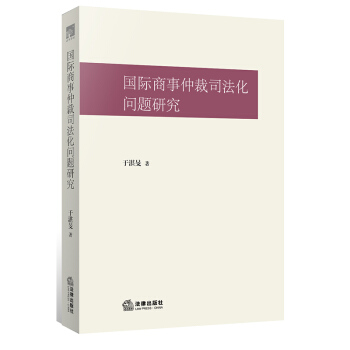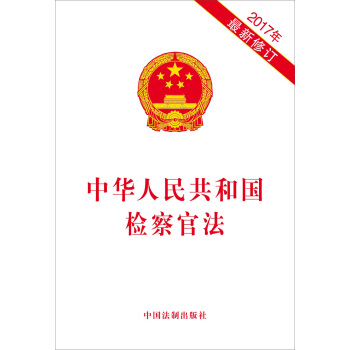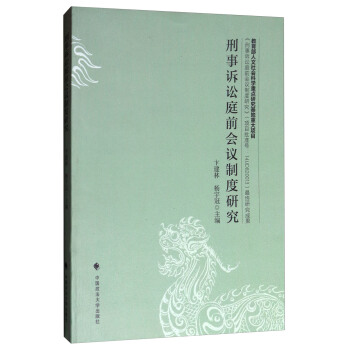

具体描述
内容简介
本书作者长期从事国际商事仲裁的研究和双语教学,为适应法学教育国际化,满足各校法学专业开展双语教学之需要,在总结多年教学实践经验基础上潜心编撰了本教材。教材涵盖了国际商事仲裁各个阶段和各个方面的基本法律制度,内容全面详实。全书分绪论、仲裁协议、仲裁员和仲裁庭、仲裁程序、仲裁裁决、对仲裁裁决的异议、外国仲裁裁决的承认与执行七章,结构简明,逻辑清晰。行文结构均先归纳总结国际社会的一般做法与实践,再比较分析中国的相关立法及与国际立法通例之差异,寓繁于简,风格独特。本书既可作为本科生和研究生学习国际商事仲裁课程的双语教材,亦可供研究人员作为国际商事仲裁相关领域的参考书籍。
作者简介
石现明,先后获四川外国语大学英语语言文化专业学士学位、西南政法大学法理学专业硕士学位和国际法学专业博士学位,并曾在牛津大学法学院作访问学者(2010年5月~2011年5月)。现为云南财经大学法学院教授、教授委员会主任,主要从事法律方法论和国际法,特别是国际商事仲裁法的教学与研究,已出版国际商事仲裁学术专著2部,发表中英文国际商事仲裁学术论文近30篇。吕涛,先后获吉林大学法律专业学士学位和云南大学民商法专业硕士学位。现为云南财经大学法学院副教授,主要从事商法、国际商法和国际商事仲裁法的教学与研究,已在多个领域出版专著多部,发表学术论文约20篇
目录
Chapter ⅠAn Overview of International Commercial ArbitrationSection 1Arbitration in General
1.Definition and features of arbitration
2.Legal nature of arbitration
3.Types of arbitration
Section 2International Commercial Arbitration and the Merits
1.Definition of international commercial arbitration
2.Merits of international commercial arbitration
Section 3Sources of international Commercial Arbitration Law
1.National arbitration laws
2.International arbitration conventions
3.Arbitration rules
4.Sources of arbitration law in China
Section 4International Commercial Arbitration Institutions
1.Leading arbitration institutions in foreign jurisdictions
2.Foreign�瞨elated arbitration institutions in China
Chapter ⅡArbitration Agreement in International Commercial Arbitration
Section 1Arbitration Agreement in General
1.The importance of arbitration agreement
2.Definition of arbitration agreement
3.Types of arbitration agreement
4.Subjects of arbitration agreement
5.Objects of arbitration agreement
Section 2Form and Contents of Arbitration Agreement
1.Form of arbitration agreement
2.Contents of arbitration agreement
3.Form and contents of arbitration agreement in China
Section 3Validity of International Arbitration Agreement and the Applicable Law
1.Validity of international arbitration agreement
2.Applicable law of international arbitration agreement
3.Defective arbitration agreement
Section 4Effects,Enforcement and Termination of Arbitration Agreement
1.Effects of arbitration agreement
2.Enforcement of arbitration agreement
3.Termination of arbitration agreement
Section 5Autonomy of Arbitration Agreement
1.The principle of autonomy of arbitration agreement
2.The principle of competence�瞔ompetence
Chapter ⅢArbitrator and Arbitral Tribunal in International Commercial Arbitration
Section 1Arbitrator in General
1.Status of arbitrator
2.Qualifications of arbitrator
3.Independence and impartiality of arbitrator
Section 2Appointment of Arbitrator and Constitution of Arbitral Tribunal
1.Number of arbitrators
2.Selection and appointment of arbitrator
Section 3Challenging and Replacing Arbitrator
1.Challenging arbitrator
2.Replacing arbitrator
Section 4Powers,Rights,Duties and Liabilities of Arbitrator
1.Powers of arbitrator
2.Rights of arbitrator
3.Duties of arbitrator
4.Liabilities of arbitrator
Chapter ⅣProcedures of International Commercial Arbitration
Section 1Procedural Rules of International Commercial Arbitration
1.Diminishing roles of the law of the arbitral seat
2.Determination of procedural rules in international commercial arbitration
3.Determination of procedural rules in China
Section 2Procedural Steps of International Commercial Arbitration
1.Commencement of the arbitral proceedings
2.Constitution of the arbitral tribunal
3.Written submissions
4.Hearing
5.Deliberation of the arbitral tribunal
6.Closing and termination of the arbitral proceedings
7.Making and publication of award
8.Procedural steps of arbitration in China
Section 3Evidence in International Commercial Arbitration
1. The parties’ autonomy and the arbitral tribunal’s discretion to determine rules of evidence
2.Categories of evidence
3.Sources of evidence
4.Discovery of evidence
5.Admission of evidence
6.Evidentiary rules in arbitration in China
Section 4Provisional Measure in International Commercial Arbitration
1.Definition and objectives of provisional measure
2.Types of provisional measure
3.Prerequisites for ordering provisional measure
4.Authorities to order provisional measure
5.Enforcement of provisional measure ordered by the arbitral tribunal
6.Provisional measure in arbitration in China
Section 5Other Procedural Issues in International Commercial Arbitration
1.Seat of arbitration
2.Consolidation and Joinder
3.Defaulting proceedings
4.Language of arbitration
5.Presentation in arbitration
Chapter ⅤArbitral Award of International Commercial Arbitration
Section 1Arbitral Award in General
1.Definition of arbitral award
2.Types of arbitral award
3.Form and Contents of arbitral award
Section 2The Law Applicable to the Substance of the Dispute
1.Sources of substantive law
2.Determination of substantive law
Section 3Rules of Making International Commercial Arbitral Award
1.Time limit for making arbitral award
2.Mechanism of making arbitral award
3.Notification and deposit of arbitral award
Section 4Effects of International Commercial Arbitral Award
1.Termination of the arbitrators’ jurisdiction
2.Res Judicata of the award
3.Enforceability of the award
Chapter ⅥChallenge to Award in International Commercial Arbitration
Section 1General Introduction
1.Meaning and purpose of challenge
2.Conditions of challenge
3.Place of challenge
4.Time limit of challenge
5.Exclusion and waiver of the right to challenge
Section 2Grounds for Challenging International Arbitral Award
1.Grounds under the Model Law
2.Grounds wider than those under the Model Law
3.Grounds narrower than those under the Model Law
Section 3Means,Remedies and Consequences of Challenging Arbitral Award
1.Means of challenge
2.Remedies and legal consequences
Section 4Challenging Foreign�睷elated Arbitral Award in China
1.The statutory provisions on challenge of foreign�瞨elated arbitral award
2.The problems of the regimes of challenging foreign�瞨elated arbitral award
Chapter ⅦRecognition and Enforcement of Foreign Arbitral Award
Section 1General Introduction
1.Meaning of foreign award
2.Deference between recognition and enforcement
3.Pre�瞨equisites for recognition and enforcement
4.Procedures and methods of recognition and enforcement
Section 2Conventions on Recognition and Enforcement of Foreign Award
1.The New York Convention
2.Other conventions
Section 3Refusing Recognition and Enforcement of Foreign Award
1.Grounds to refuse recognition and enforcement
2.Waiver and preclusion of the defenses to recognition and enforcement
3.Consequence of refusal of recognition and enforcement
Section 4Recognition and Enforcement of Foreign Award in China
1.The legal framework for enforcement of foreign award
2.The legal rules on enforcement of foreign award
3.Recognition and enforcement in the Mainland of award made in Hong Kong,Macao and Taiwan
前言/序言
ForewordsWith the development of economic globalization and the enhancement of comprehensive strength,the economic connection of China with other countries and areas is getting closer and closer.In 2014,the total value of import and export of China reached 26.43 trillion RMB,direct investment actually made in China by foreign investors reached 119.6 billion USD,and direct investment made in foreign countries and areas by Chinese investors reached 102.9 billion USD.All these have made China the most active and important participant in world economy.With such a circumstance,it is beyond doubt that the demand for foreign�瞨elated legal talents will increase considerably.
To foster qualified foreign�瞨elated legal talents,it is essential that foreign�瞨elated legal courses be taught in foreign languages.As early as in 2001,the Ministry of Education required that 5-10 percent of courses in major of finance,law and the like,should be taught in English or other foreign languages.Since then,many law schools in China offered some bilingual or English legal courses.In our teaching practice,we have perceived the unsuitability of using original English textbooks in Chinese classes.So we have long been planning to edit and publish our own English textbooks on international or foreign�瞨elated legal subjects,and this textbook is the first one.
Arbitration is the best and most frequently used method to resolve international commercial disputes,and international commercial arbitration is one of the most internationalized legal branches.In the past two decades,many jurisdictions reformed their arbitration legislation based upon the Model Law,which reflects the modern trend of the practice of international commercial arbitration,and in accordance with the requirements of the New York Convention.This textbook generalizes the common practices of modern international commercial arbitration,with references to the New York Convention,the Model Law,the newest arbitration legislation of major jurisdictions,the newest arbitration rules of leading international arbitration institutions and many up�瞕ated academic literatures,and especially with Chinese laws and practice on foreign�瞨elated arbitration being compared.
To cater for various demands of different schools and students at different levels,this textbook focuses on introducing the fundamental legal rules and general practice of international commercial arbitration,instead of discussing pure theoretical issues.The structure of this textbook is simplified and thus very concise,but is logically complete,covering every aspect of international commercial arbitration,including arbitration agreements,arbitrators and arbitral tribunals,arbitral proceedings,arbitral awards,challenge to arbitral awards,and recognition and enforcement of foreign arbitral awards.This textbook can,therefore,be used either in law schools which are the training bases of outstanding foreign�瞨elated legal talents approved by the Ministry of Education or in other law schools,either for undergraduate students or for postgraduate students.
Because of limitation of the ability and proficiency of the authors,there must be some mistakes and errors in this textbook.We sincerely hope that the users and readers would be generous enough to feedback us with any comments,suggestions and corrections,which will be highly appreciated.
Professor Shi Xianming
December,2015
用户评价
这本《简明国际商事仲裁法律与实践英文教程》简直是打开了我新世界的大门!作为一名刚踏入国际贸易领域的新人,之前对仲裁的概念一直停留在模糊的理解阶段,总觉得它离我遥不可及,充满了各种高深莫测的术语和流程。但这本书的出现,彻底颠覆了我的认知。它用一种极其清晰、循序渐进的方式,将复杂的国际商事仲裁体系化繁为简,娓娓道来。从仲裁的基本原则、法律渊源,到具体的仲裁程序、仲裁协议的效力、仲裁员的选定、证据的收集与质证,再到最终的仲裁裁决的承认与执行,这本书几乎涵盖了所有我关心的核心内容。更令人惊喜的是,它不仅仅是理论的堆砌,更融入了大量实际案例分析,这些案例来自世界各地,涵盖了不同的行业和争议类型,让我能够真实地感受到仲裁在解决跨国商业纠纷中的实际应用。书中穿插的英文原版法律条文和国际规则,也让我有机会在学习理论的同时,提升自己的法律英文阅读能力,为我将来能够独立阅读和理解英文法律文件打下了坚实的基础。我尤其欣赏作者在解释一些关键概念时,所使用的类比和图示,让原本晦涩的条文变得生动易懂。这本书的语言也相当地道,流畅自然,阅读起来毫无障碍,仿佛在与一位经验丰富的仲裁专家进行面对面的交流。它不仅仅是一本教科书,更像是一位循循善诱的导师,引导我一步步深入理解国际商事仲裁的精髓。
评分这本书对于我这样希望深入了解国际商事仲裁体系的非法律专业人士来说,简直是及时雨。《简明国际商事仲裁法律与实践英文教程》以一种非常人性化的方式,将原本可能令人望而生畏的法律主题,变得触手可及。作者并没有假设读者拥有深厚的法律背景,而是从最基础的概念入手,逐步引导读者深入。我尤其喜欢书中对于“仲裁与诉讼的比较”部分的阐述,它清晰地指出了仲裁的优势和劣势,以及在什么情况下选择仲裁更为合适。这对于我这样的商业人士,在权衡利弊时,提供了非常重要的参考依据。书中对于“国际商事仲裁的关键流程”的讲解,也非常生动,它用时间轴的方式,清晰地展示了从启动仲裁程序到最终执行裁决的各个环节,让我对整个过程有了宏观的认识。而且,书中关于“证据规则”和“仲裁员的角色”的讨论,也让我对仲裁过程中的一些“潜规则”和“操作技巧”有了初步的了解。这本书的英文,也并非是那种“一看就头疼”的学术化语言,而是更加注重清晰和准确,并且适时地提供了关键术语的解释,这对于我这样一个对法律英文还在学习阶段的人来说,非常友好。它让我感觉自己不再是被动地接受信息,而是能够主动地去理解和吸收。这本书让我看到了,即使是非法律专业人士,也能够有效地掌握国际商事仲裁的基本知识,并为日后的工作打下坚实的基础。
评分作为一名常年在国际贸易一线摸爬滚打的从业者,对于如何在跨国交易中有效规避和处理潜在的法律风险,我一直有着强烈的需求。《简明国际商事仲裁法律与实践英文教程》这本书,正好满足了我这一需求。它不仅仅是理论知识的传授,更侧重于实操层面的指导。书中对于如何起草一份有效的仲裁协议,如何选择合适的仲裁机构和仲裁地,以及如何在合同谈判中就争议解决方式进行合理的约定,都给出了非常具体和实用的建议。我特别欣赏作者在讨论仲裁风险时,所采取的“预警式”的讲解方式,它帮助我提前识别出一些可能导致仲裁败诉的“雷区”。例如,书中对于“仲裁条款的适用范围”、“仲裁员的独立性与公正性”等问题,都进行了深入的分析,并结合实际案例,指出了常见的误区和陷阱。这对于我来说,无疑是宝贵的经验总结。而且,这本书的英文内容,并非是枯燥的法律条文堆砌,而是融入了大量的实用性词汇和句式,能够帮助我更快地掌握与国际商事仲裁相关的英文沟通技巧。我甚至可以想象,在未来的工作中,我会将这本书作为一本“工具书”,随时查阅和参考。它让我感觉自己不再是孤军奋战,而是有了一位可以信赖的“智囊团”。
评分坦白说,我在选择这本《简明国际商事仲裁法律与实践英文教程》之前,也曾犹豫过,担心它是否会过于学术化,或者是否会因为是英文教程而难以消化。然而,当我翻开第一页,我的疑虑便烟消云散了。这本书的结构设计非常合理,每一个章节都像精心设计的乐章,环环相扣,层层递进。作者在开篇就为读者勾勒出了国际商事仲裁的全景图,然后逐步深入到各个细节。让我印象深刻的是,书中对于不同国际仲裁机构(如ICC、CIETAC、SIAC等)的介绍,不仅说明了它们的特点,还分析了各自在程序上的差异,这对于希望了解不同仲裁规则下实践操作的我来说,非常有价值。作者在讲解过程中,并没有回避那些可能引起争议或者容易混淆的问题,而是深入剖析,给出清晰的解释和专业的观点。比如,在讨论管辖权和可仲裁性时,书中列举了大量可能导致仲裁协议无效的因素,并结合判例进行了详细阐述,这让我对如何规避潜在风险有了更深刻的认识。而且,这本书在英文的运用上也恰到好处,它既提供了必要的专业术语,又保证了整体的可读性。它并没有为了炫技而使用过多的生僻词汇,而是选择那些在国际商事仲裁领域中最为常用和重要的词汇,并辅以必要的注释。这对于正在努力提升自己涉外法律能力的读者来说,无疑是一份宝贵的资源。它不仅仅是在教授知识,更是在培养一种解决国际商事纠纷的思维方式。
评分这本书的出现,无疑为我解决实践中的一些难题提供了重要的指引。《简明国际商事仲裁法律与实践英文教程》的价值,绝不仅仅在于它所罗列的法律条文和规则,更在于它对于这些规则背后逻辑和实际应用的深刻洞察。我尤其喜欢书中对于“程序公正”和“实质正义”在仲裁实践中如何平衡的探讨。作者通过对一些经典案例的分析,揭示了在不同文化背景和法律体系下,如何理解和适用这些原则,这让我对仲裁的灵活性和包容性有了更深的体会。书中对于证据规则的阐述,也让我眼前一亮。不同于国内诉讼中相对僵化的证据提交和审查方式,国际商事仲裁在证据方面更加灵活,但也因此对当事人的专业能力提出了更高的要求。这本书详细介绍了证据的类型、提交方式、异议提出以及如何进行有效的质证,这些内容对于我来说,是急需补足的知识短板。而且,书中对于律师在仲裁过程中的角色和职责的描述,也让我对自己的职业发展有了更清晰的认识。无论是作为代理人还是作为咨询者,了解仲裁的完整流程和潜在风险,都是至关重要的。这本书的英文表达也相当地道,很多描述和表述方式,都是我在其他教材中学不到的,它们更贴近国际仲裁的实际语言习惯。它让我感觉自己正在一步步地接近国际仲裁的“行话”,为我将来更好地与国际同行沟通交流打下了坚实基础。
相关图书
本站所有内容均为互联网搜索引擎提供的公开搜索信息,本站不存储任何数据与内容,任何内容与数据均与本站无关,如有需要请联系相关搜索引擎包括但不限于百度,google,bing,sogou 等
© 2025 book.tinynews.org All Rights Reserved. 静思书屋 版权所有



![《最高人民法院关于进一步推进案件繁简分流优化司法资源配置的若干意见》读本 [A Guide To the Opinions on Further Streamlining Legal Proceedings by Sorting Between Complex and Simple Cases and Optimizing Allocation of Judicial Resources] pdf epub mobi 电子书 下载](https://pic.tinynews.org/12079854/585a6b97N0195bcaf.jpg)
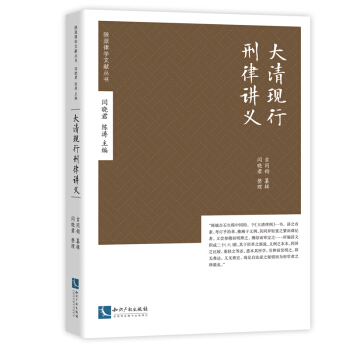
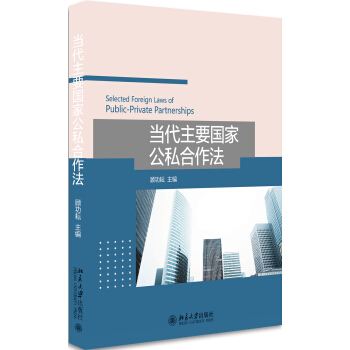
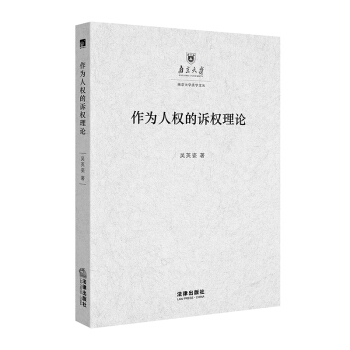


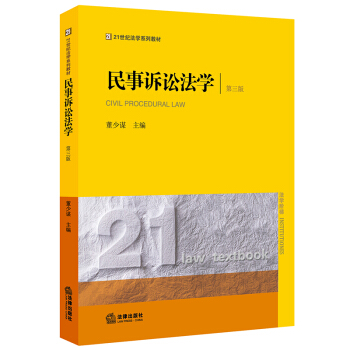
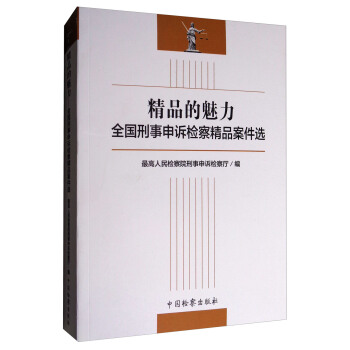
![域外法院组织和法官管理法律译编(套装上下册) [Extraterritorial Court Organization and Judge Management Laws Collection] pdf epub mobi 电子书 下载](https://pic.tinynews.org/12184582/591aa38eN86a2fa77.jpg)
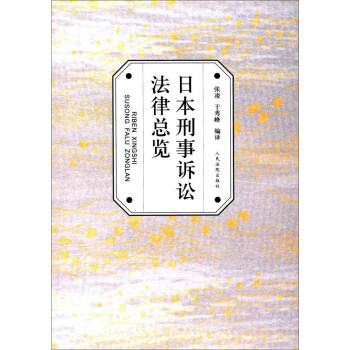
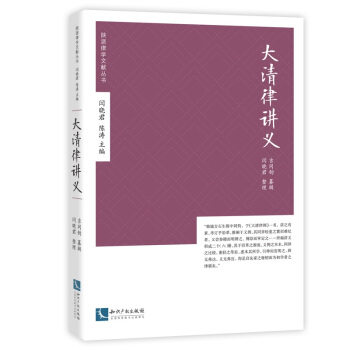
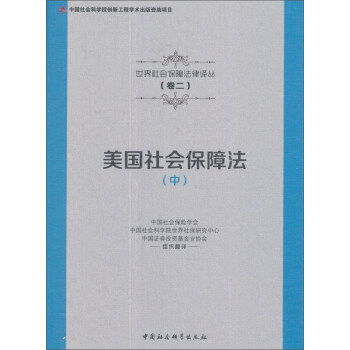
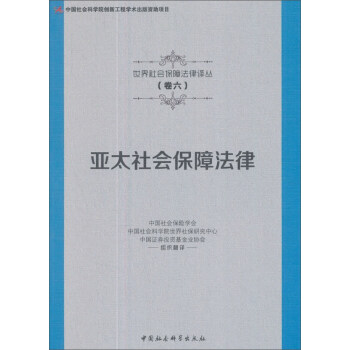
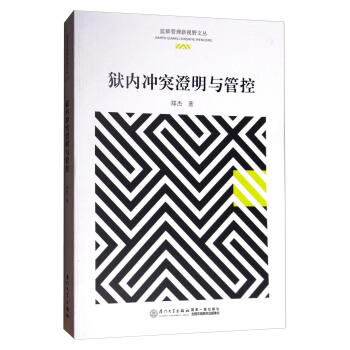
![互联网金融监管法律制度研究 [Study on the Regulatory Legal System of Internet Finance] pdf epub mobi 电子书 下载](https://pic.tinynews.org/12216738/596893fcN89a1890a.jpg)
